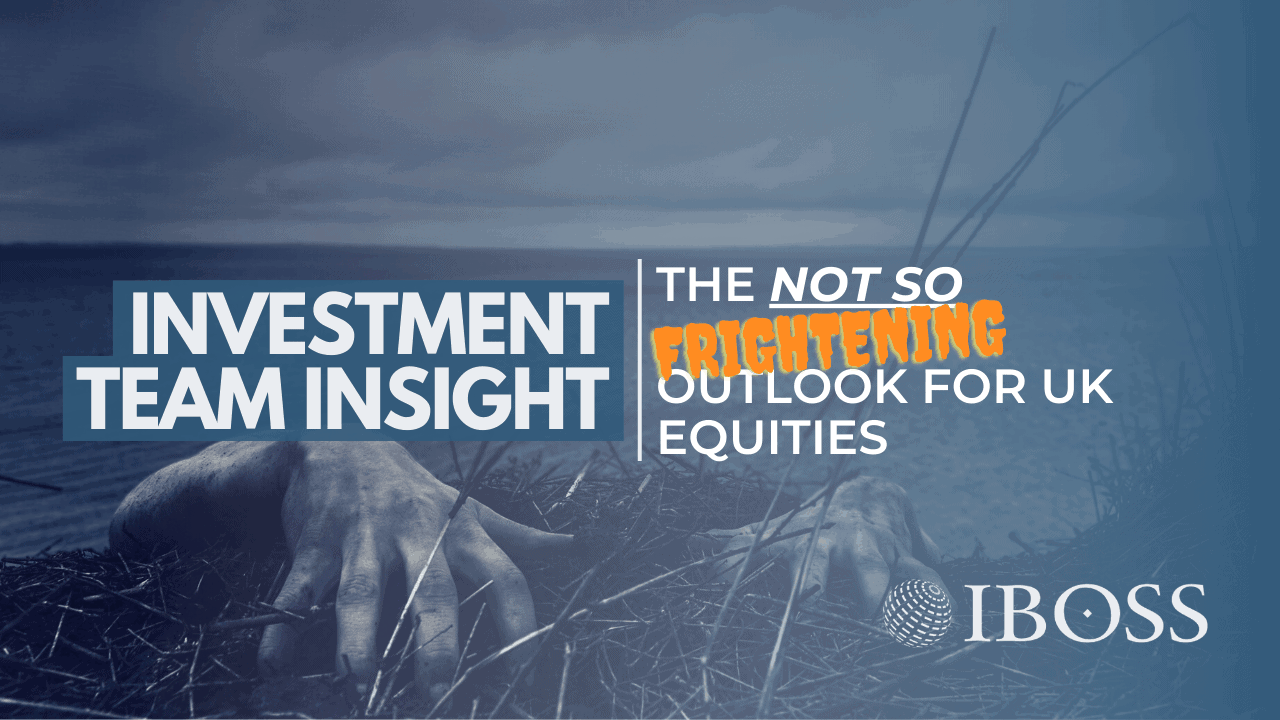
UK equities have been haunting multi-asset investors’ portfolios, cursing them with poor returns for several years. The unpopular makeup of the FTSE 100, a market devoid of almost all things technology based but heavy on big oil and big banks, plus the looming spectre of Brexit has scared many investors away. In fact, the UK is now so unpopular that it is now “normal” for UK managers to no longer hold a significant portion of their portfolio in UK assets. Can anybody dare to imagine the horror show if the US retail and institutional investors ever went down the same track? Now that would be genuinely scary.
This already difficult situation was compounded in February this year as investors swiftly decided which stocks were likely to succeed in pandemic conditions and which should be discounted or sold completely. Most UK equities fell afoul of market sentiment as dividend paying equities, including Oil & Gas and Financials, were the biggest losers. UK equities fell further than other developed markets and at the time it was hard to make a case for why anybody would invest in the UK versus our developed market peers. Many investors considered COVID-19 to be the final nail in the UK coffin and UK equities saw a huge number of outflows in the months following February’s initial sell off.
Heading into the woods
As we approach Halloween it is worth considering that we are now significantly further down the road on many of these fronts. To be fair, the road at first glance could appear to be like the ones in horror movies, where a car goes through the middle of a dark forest and then the engine cuts out, there is silence and the fear is palpable.
To many the situation may feel just as bleak, considering the 49% cut in UK dividends, persistent COVID restrictions, local lockdowns and volatile market conditions. It is however worth a moment of reflection as to how much new uncertainty and headwinds the UK verses the rest of the developed world will face and what is already in the price?
As in any classic horror film, the danger usually peaks just prior to the point of relative safety. We are on record as saying that equity markets look through shorter term market woes more rapidly than many would expect. This may go some way to explain why many UK investors and managers are seeing opportunity in the UK relative to other developed markets. We cannot forget all those momentum traders out there, who would have to have been crazy to jump on a bandwagon which appeared to have no wheels on it.
The absolute capitulation of dividend paying stocks affected the UK market more acutely than others due to its overabundance of these firms. It stands to reason that, if the outlook for dividend paying companies improves, the UK should benefit more than many of its developed market peers. The likelihood of which seems to be improving as companies believe that the worst is behind them. After all, it is easy to dwell on the recent past and extrapolate that past into the future. A recent past that includes two thirds of companies cutting or cancelling their dividends this year, something that seems unlikely to happen again.
The spectre of lockdown part two
The one possibility that could take us backwards would be another UK national lockdown. This would be incredibly unpopular and bitterly resisted, as would be the case in the rest of Europe. We don’t think it will happen and in any event it wouldn’t be for long.
The extrapolation of recent data does not end with dividend paying equities. Investors continue to value Growth characteristics and technology firms over a wider range of strategies and styles. This has led to many multi asset portfolios holding a selection of funds that look different on the surface but in reality hold very similar assets– think diversifying a bowl of M&Ms by introducing Smarties.
What is interesting is that the UK’s differing asset make-up potentially provides a pre-packed remedy for this lack of diversity. Over 5 years the correlation of UK assets to the rest of the world is reasonably high (0.83) but relative to the large cap tech the UK provides a reasonable amount of diversification with a correlation of only 0.63, significantly lower than other developed markets.
The final point here is that news surrounding the UK does not have to be entirely positive, just less dire than it has been over recent months. Currently investors may well favour M&Ms and Smarties but having gorged themselves on sugar coated chocolate for the last 5 years, the UK may well offer something more satisfying from here on out… Skittles perhaps.
This communication is designed for Professional Financial Advisers only and is not approved for direct marketing with individual clients.
Past Performance is no guarantee of future performance. The value of an investment and the income from it can fall as well as rise and investors may get back less than they invested. Risk factors should be taken into account and understood including (but not limited to) currency movements, market risk, liquidity risk, concentration risk, lack of certainty risk, inflation risk, performance risk, local market risk and credit risk.
IAM 311.10.20

